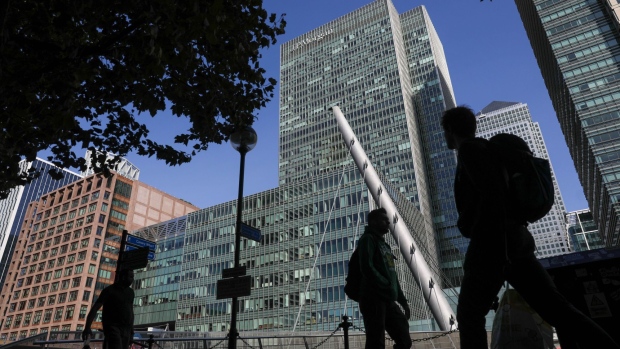Feb 19, 2021
JPMorgan Says PE Deals to Spur Junk-Bond Craze in Europe: Q&A
, Bloomberg News

(Bloomberg) -- JPMorgan Chase & Co. says the leveraged-debt markets in the EMEA region will get a boost this year from a spate of private-equity deals and investors’ clamor for higher yields.
Ben Thompson and Daniel Rudnicki Schlumberger, co-heads of the leveraged-finance team for Europe, Middle East and Africa, point to 300 billion euros ($364 billion) of “dry powder” in the hands of private-equity firms. Putting this to work for acquisitions including leveraged buyouts should lead to a rush of debt issuance. According to Fitch Ratings, PE sponsors typically use their own funds only for half of the purchase price and rely on leveraged loans or high-yield bonds to complete deals.
Meanwhile, Europe’s near-zero base rates and the burden of $14.2 trillion of negative-yield debt across the world are pushing investors to snap up junk-rated debt to earn higher returns.
Thompson and Rudnicki Schlumberger spoke with Laura Benitez and Ruth McGavin on Feb. 8, 2021. Comments have been edited and condensed.
What will drive leveraged-debt issuance this year?
Thompson:
- High-yield bond sales will be robust this year, and even exceed last year’s tally of about 87 billion euros. With 110 billion euros of high-yield bonds with call dates due in 2021, supply from potential refinances alone could be significant.
- There’s more dry powder than ever before, about 300 billion euros, and it’s going to spur a wave of mergers and acquisitions including auctions and many public-to-private deals, despite elevated valuations. We’ll also see a lot of corporate M&A, which now make up about 50% of the market.
What’s spurring the intense hunt for yield we’re seeing?
Thompson:
- Investors have a lot of cash to put to work and there’s even more behind it, as the search for yield continues. I don’t see enough net new-money supply to overrun demand in the near term.
- We’re seeing more credit buyers seeking higher-yielding assets, and they are willing to stretch on credits to achieve these goals. There are deep and growing pockets of credit capital at pretty much all stops from the mid-to high-single digits all the way into the low-to mid-double digits.
Rudnicki Schlumberger:
- In the short-term, demand is very good but in a time of unprecedented volatility, risks remain. The reopening of the economy in 2021 is what we’re looking for, but a new strain of the virus could jeopardize that.
What is the bank’s strategy for stressed and distressed credits?
Thompson:
- We’re still looking actively at businesses that have come up against challenges in 2020. We put our balance sheet to work for a number of stressed names last year and we intend to continue that strategy selectively this year.
- We’re looking more for companies that are experiencing temporary dislocations and have upcoming liquidity challenges in a 12-18 month period.
How are you approaching ESG lending?
Rudnicki Schlumberger:
- The first thing is to find indicators that matter to the company and have been tracked for some time. We want to make sure they are meaningful, and not just for show. The targets need to be ambitious.
- Companies are trying to achieve these goals and there is also clear momentum from the investor base as they want to be able to show their end-investors that they are supporting ESG-compliant transactions.
©2021 Bloomberg L.P.